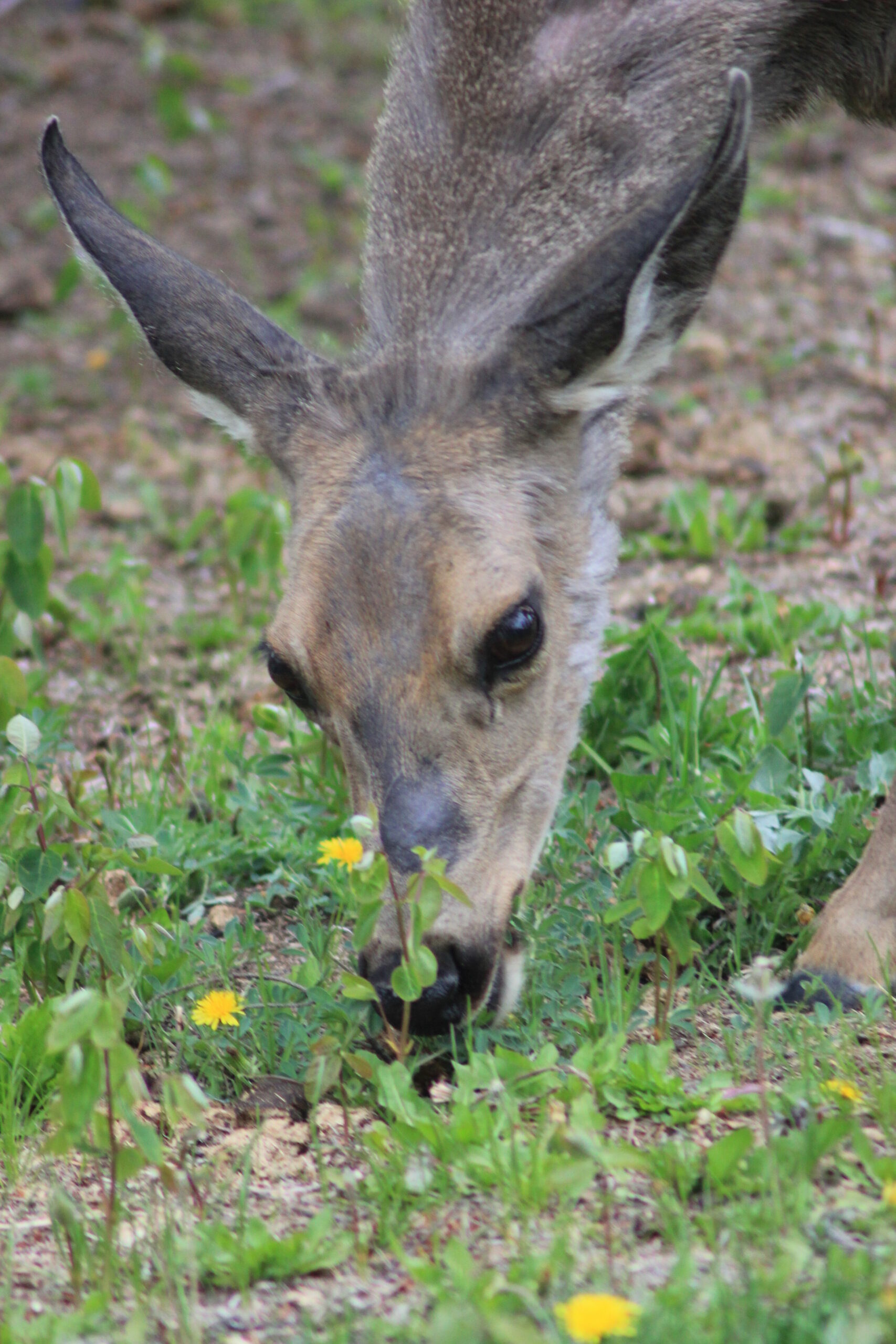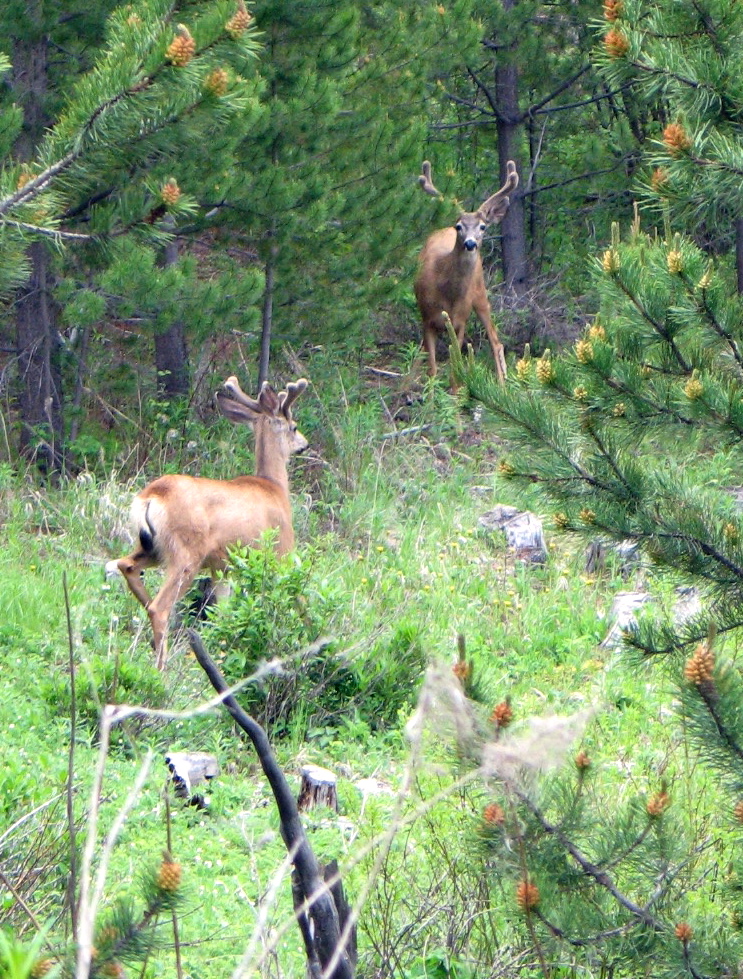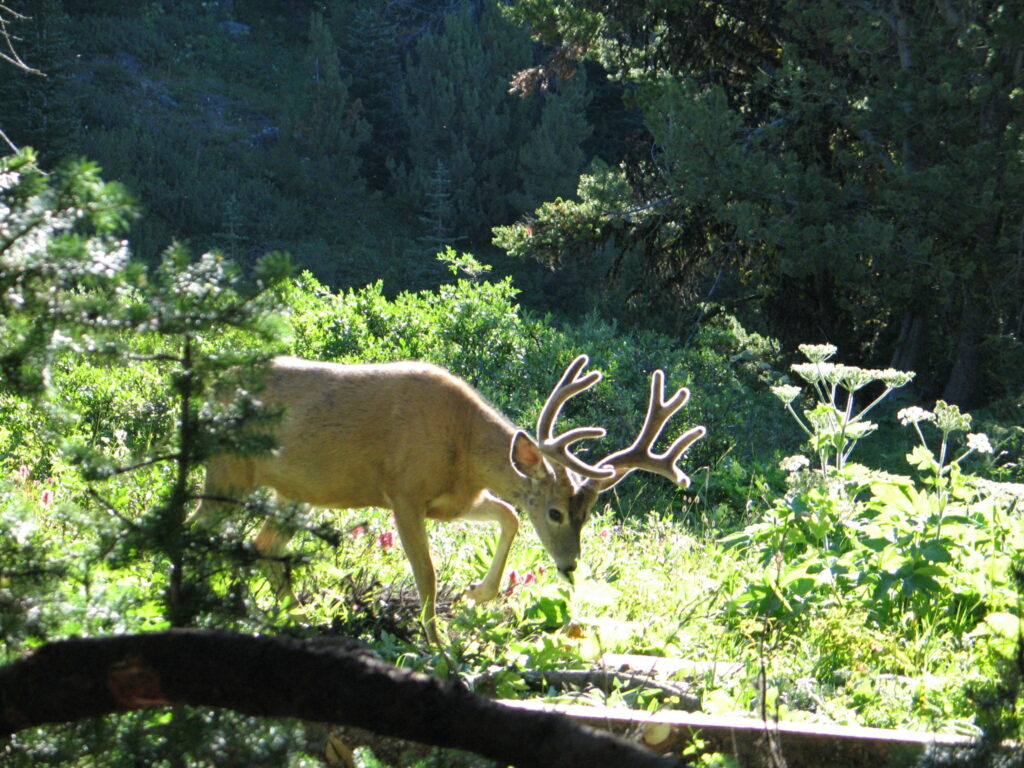

Mule deer are larger than other deer species and are particularly distinguishable by their large ears which can be 9” long and is given them their name. They’re coat is brown with a white, black-tipped tail, surrounded by a white coat around their butt. In winter, their coat is grey, not brown with black colouring on their chest. A buck mule deer measures 70 inches average and can weigh between 180 and 400 lbs. Doe mule deer average 57 inches and weigh between 120 and 160 lbs. This will vary depending on the climate and food availability. Mule deer are well distributed across much of British Columbia. Some mule deer are migratory and moving hundreds of miles between winter and summer range, others remain in a similar location year-round, just moving from the alpine to the valleys to avoid the deep snow.
Mule deer antlers “fork”as they grow and are similar to those of black-tailed deer, but are generally larger and with more points at every age. Mature mule deer bucks have five point antlers.
They mate in the fall from October to late November. Bucks will mate with multiple does each season, spending a few days with one doe before continuing to find another but sometimes also staying with two or three at the same time. Does are pregnant for 30 weeks and are usually giving birth to twins in June. Single births only occur when the food sources were sparse.
Mule deer eat a variety of plants and trees including aspen, willow, red osier dogwood, bitterbrush, juniper berry and service berry. In winter, when other food is scarce they will also eat Douglas-fir. They eat also a wide range of herbaceous plants including blue grass, wheat grass and June grass.
The greatest cause for death for mule deer is starvation during winter. Predation by coyotes, cougars and wolves are also major contributors as well as parasites. Although wolves and mule deer don’t often live in the same habitat, wolves are a dangerous predator when they do. Wolves will chase mule deer onto frozen lakes where they have the upper hand.
